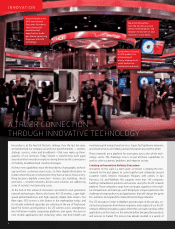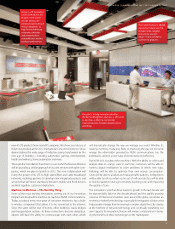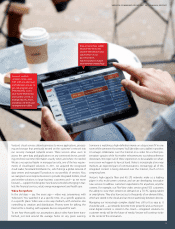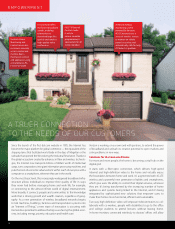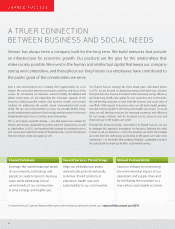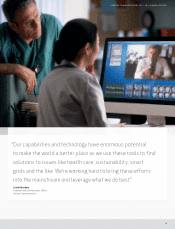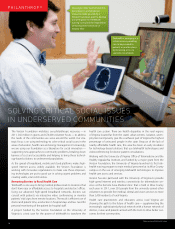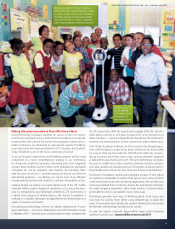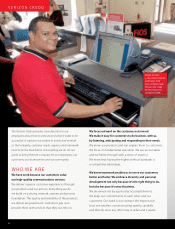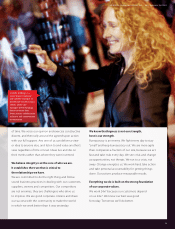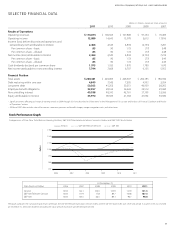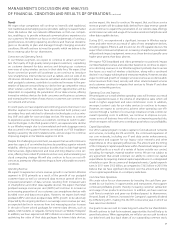Verizon Wireless 2011 Annual Report Download - page 20
Download and view the complete annual report
Please find page 20 of the 2011 Verizon Wireless annual report below. You can navigate through the pages in the report by either clicking on the pages listed below, or by using the keyword search tool below to find specific information within the annual report.
Photo courtesy of UVA Health System
Telehealth is emerging as a
critical resource, enabling
care to be provided to
patients in rural locations
by increasing access to
specialty consultations.
Neurologist Andy Southerland, M.D.,
participates in a telemedicine
encounter made possible by a
Verizon Foundation grant to develop
one of Virginia’s rst telehealth
nursing curricula at the Department
of Nursing at the University of
Virginia-Wise.
PHilantHROPY
SOLVING CRITICAL SOCIAL ISSUES
IN UNDERSERVED COMMUNITIES
The Verizon Foundation mobilizes our philanthropic resources — in
2011, $66 million in grants and 674,000 volunteer hours — to address
the needs of the communities we serve around the world. Our stra-
tegic focus is on using technology to solve critical social issues in the
areas of education, health care and energy management. Increasingly,
we are using our foundation as a laboratory for social innovation —
supporting new approaches to community problems, breaking down
barriers of cost and accessibility and helping to bring these technol-
ogy-based solutions to underserved populations.
As the spread of broadband, mobile and cloud platforms makes high-
speed Internet access widely available, the Verizon Foundation is
working with innovative organizations to make sure these empower-
ing technologies are put to good use in solving urgent problems and
creating viable, vital communities.
Removing Barriers to Rural Health Care
Telehealth is one way to bring medical professionals to locations that
don’t have easy or aordable access to hospitals and doctors’ oces.
Using our advanced high-speed broadband networks, doctors can
consult with patients via interactive video conferencing or monitor
patients’ vital signs from remote locations. The result is ecient use of
doctor and patient time, a reduction in hospital stays and less need for
personal monitoring of the patient by hospital sta.
A project funded by the Verizon Foundation at the University of
Virginia is a test case for the power of telehealth to transform the
health care system. There are health disparities in the rural regions
of Virginia located far from the state’s urban centers. Isolation, unem-
ployment and poverty give the southwest part of Virginia the highest
percentage of uninsured people in the state. Because of the lack of
nearby aordable health care, this area has been an early incubator
for technology-based solutions that use telehealth technologies and
videoconferencing for doctor-patient consultations.
Working with the University of Virginia Oce of Telemedicine and the
Healthy Appalachia Institute, and funded by a major grant from the
Verizon Foundation, the University of Virginia launched its rst tele-
health nursing program to train medical personnel at its Wise County
campus on the use of emerging telehealth technologies to improve
health care access and services.
Verizon has also partnered with the University of Virginia to provide
high-speed Internet and wireless connectivity for telemedicine ser-
vices at the Remote Area Medical clinic that is held in Wise County
each year. In 2011, over 250 people from the university joined other
volunteers to provide free medical, dental and vision services to more
than 2,400 residents of rural Virginia.
Health care practitioners and educators across rural Virginia are
showing the path to the future of health care — supplementing the
increasingly sophisticated physical network with a human network of
doctors, nurses and patients armed with the tools to drive better out-
comes for their communities.
18


